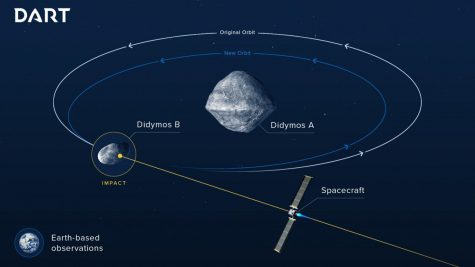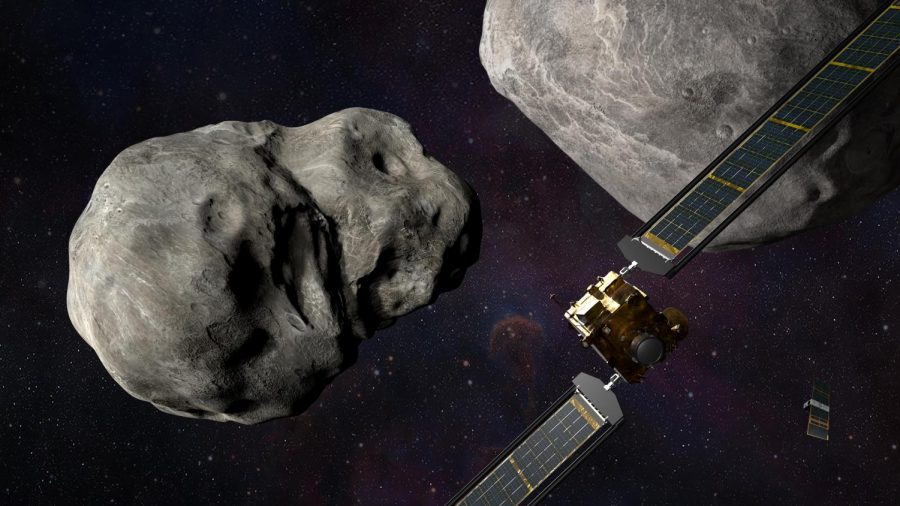NASA Launches $325 Million DART Satellite on Crash Course for Asteroid
NASA/Johns Hopkins APL/Steve Gribben
NASA DART satellite approaches Didymos and Dimorphos
December 2, 2021
Asteroids are a huge threat to life on Earth and historically there has been no way to change that, until now.
NASA launched their $324.5 million DART satellite on November 24 atop a SpaceX Falcon 9 rocket. The name stands for Double Asteroid Redirection Test.
The spacecraft is targeting a small moonlet (a small moon) called Dimorphos which is orbiting a larger asteroid called Didymos. According to nasa.gov, Dimorphos has about a 525 foot diameter and is about 11 million kilometers away from Earth. The asteroids orbit the sun every two years with an elliptical orbit that approaches Mars and comes back near Earth.
The spacecraft will arrive at the asteroid in late 2022. The purpose of the mission is to test the ability to move asteroids trajectories at the slightest to avoid a collision on Earth.
To change the orbit of this small moonlet, NASA will smack into it at a whopping 15,000 mph while a small cubesat will attempt to video the collision. This video will help understand how much debris is kicked up on impact.
Also, the satellite will be equipped with an on board camera and take pictures and send them back to Earth until 20 seconds before impact.

Falcon 9 launched at 12:20 PM EST and took off from Vandenberg Air Force Base. Per usual, they recovered the first stage on a drone ship stationed in the ocean. This launch was Falcon 9’s 128th launch overall and 88th successful landing.
Once it’s in orbit, the satellite will extend two 28-foot solar arrays to provide energy for the spacecraft. On this mission it will also be testing a solar powered xenon thruster which can help significantly with future space probes. It will then set out on its long journey to Dimorphos and Didymos.
This mission will have to be done autonomously because of the delay in transmission from the satellite to Earth so it will be extremely stressful for the engineers who have spent so much time working on this satellite and program.
If successful, however, in the case of a potential catastrophic event like an asteroid hitting Earth, humanity will finally have a way to stop it.













Carol Brosnahan • Dec 4, 2021 at 6:59 pm
I have surmised we will be hit by a much larger asteroid which could destroy life on earth so I am encouraged by this venture. I knew it was in its infancy stage. I am concerned about the debris as another challenge we seem to not take very seriously. Good work, Will Carney.
Norris Myers • Dec 4, 2021 at 4:26 pm
Thanks for this informative and hopeful article, Will. I appreciate all the research and thought you put into your work…